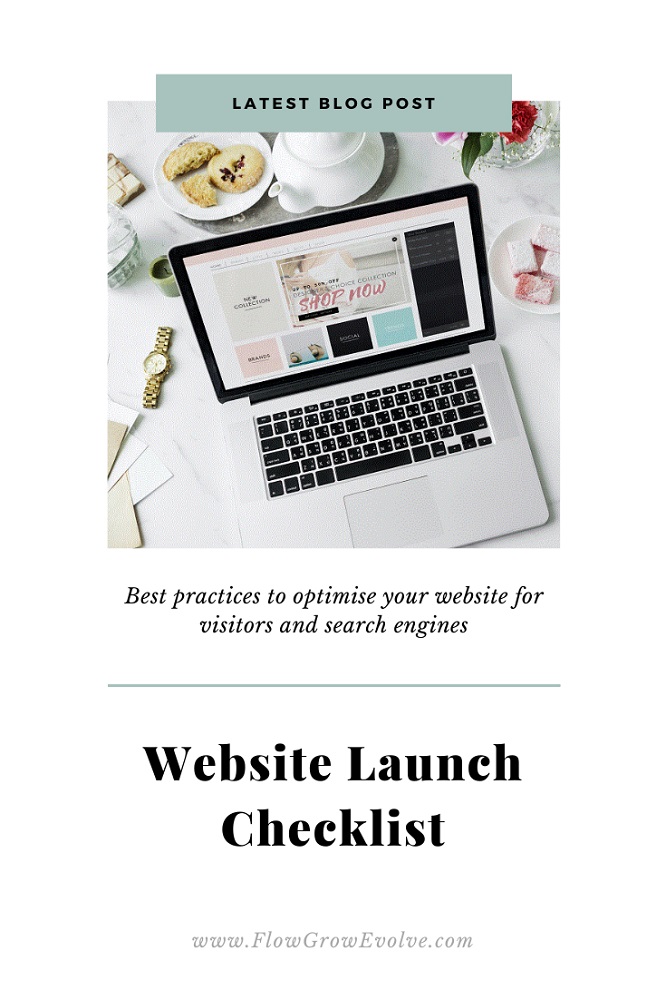Best practices to optimise your website for visitors and search engines
Once you have all the basics of your website done and close to perfect, you’ll be wanting to kick back, relax and hit publish, yet there are a few last steps in the website launch checklist that will work wonders in optimising your site before it goes live.
These are quick easy steps, but will make a huge difference in the running of your website:
Why you need to optimise your website:
By now, you’ve found the perfect host for your site, and you have a design and content that you are happy with and you know your audience will love it too.
While that may have taken you some time to put together, there are always a few finishing touches on a website project and a final checklist to run through before you hit publish and start sharing it with the world. There is a lot of advice out there that advises you to solely optimise for google and search engines.
Yet, Google isn’t the one who’ll be buying your products. The prime reason this is advised, is simply that google is one of the most advanced search engines and gets the most traffic, its algorithms are forever changing, yet its prime directive is to make its visitors happy and get them as quickly as possible to the information that they are looking for.
So if google is sending you traffic, all good.
![]() If your site is hard to find and read for the Google bots, or if it sees that your site has high bounce rates (this means visitors get to your website and hit the back button before you can say ‘WTF’) or isn’t mobile friendly. It will stop rating you highly on its search pages.
If your site is hard to find and read for the Google bots, or if it sees that your site has high bounce rates (this means visitors get to your website and hit the back button before you can say ‘WTF’) or isn’t mobile friendly. It will stop rating you highly on its search pages.
It’s a fine line, on the one hand, you need to appease the search engine technology while making the site attractive, clear, interesting and readable for your audience.
Making sure that your site and content is well organised, and that everything is easy to find with engaging content is the best route to success. Great websites load fast, are clear, concise and generous with what they share.
Once the visitors to your website are happy, google search bots will be happy and ideally, you’ll be happy too.
Final website launch checklist:
-
Check the basics
This almost goes without saying, but sometimes we all overlook the simple steps. Check your spelling, check that all the links work and your contact form is set up correctly.
-
Test it and Make sure it is Responsive
Check that it looks equally good on all devices and different-sized screens like mobile, laptops, iPads and desktops.
-
Website Loading Time
You can check the loading times of your site here, search engines will penalise you if your site loads too slowly. It will be slow if you use high-resolution videos or images. There are a few plugins to help you to optimise it if you need it such as WP Optimise. The best image formats to use are the web-optimised JPEG and GIF.
-
SEO (Search Engine Optimisation)
Thankfully, there are some great WordPress plugins that can help you with this. Yoast is one of the most popular, however, they’ve recently started charging for many of the features, which is why I’ve moved over to RankMath. It does the same, and while there is a pro version, the free functionality is also pretty robust. The most important tips are clear headings, subheadings, meta tags, clean URLs, internal and external links and content.
If you would like to be nerdy with it, you can also do an SEO site audit, a few of the best places to do this for free is SEO Optimer, or over on Neil Patel. They’ll give your site an overall score and also provide you with advice on what to improve.
WordPress also has a setting that helps searchability so look to see it is unchecked:

-
SSL (Secure sockets layer) Certificate
This is a security feature that encrypts data between reader and website, which makes it more secure from hackers—while a necessary function for online shops—google has also been penalising sites that don’t have an SSL certificate. You can either get the certificate from your hosting partner and install it from there. Or for ease of use (a lazy, non-tech option for people like me) I use the SSL plugin in WordPress.
-
Website Analytics
Analytics will give you an overview of the traffic to your website, pages visited and flow through your website and what websites referred your visitors. Google Analytics offers a free service that most website owners use. Although there are other options like Clicky.
The easiest way to set this up is to sign up on their website, and then install the WordPress plugin. Once you put the code in, it will share the analytics on your WordPress dashboard.
-
Search Engine Friendly Sitemap
A sitemap lists all the pages of your site in a format that is easy for search engine bots to read. A sitemap is easy to set up, I set mine up through my RankMaths Plugin, but you can read how to or set up your own or make one and upload it when you register your site with Google Search Console.
-
Robots.txt
Is a small bit of code that gives simple instructions to a search engine bot on what to follow or unfollow. There is a good explanation and technical data here. You can also use a plugin such as Yoast or RankMaths to set it up automatically.
-
WordPress Plugins that will optimise your website
Use plugins to optimise your website, they do this by cleaning the code, optimising the images and checking that everything works as it should. The one that I use is WP Optimise, Hummingbird is another option.
-
Spam Blocker
Sadly, spam is a reality of the internet and the issues are real. From spam comments to fake users, it can be a pain to resolve. The best solution is to avoid it from the start by using a spam blocker plugin, one of the best is Akismet, or WP Bruiser. On top of this make sure in the Settings>General that the membership is unchecked, this stops bots from coming in and creating fake users.

Last but not least, before going live
Once everything is in place, you have checked everything off the website launch checklist, you have your content pages, and a few blog posts, you’ve checked your links with the design and it all works fabulously.
It is time to register it with Search engines. While it’s not 100% needed, it does take time for the search crawlers (bots) to find and register your site. Doing this manually speeds up the process.
There is a great more in-depth easy guide from ahrefs, which gives advice to you on how and where to register your website with the search engines. Of if you can simply head over and register them at Google Search Console, Yandex as well as Bing.
Ready, Set, Publish:
Now you have your checklist complete, your website is also ready to share far and wide.
Wahoo!!!!! Time to crack open the champagne and/ or chocolates.
Now that it is live. A good way to quickly boost its credibility is to create some backlinks. These are simply a link from another credible website back to your own site. The quickest way to do this is to add your website to your profile on LinkedIn, Twitter, Instagram, Facebook and any other social channels.
Also, keep this in mind if you comment on other blog posts, industry forums or communities to include your website link in your signature so that people can find you.
These additional links help to let people know that it exists and search engine bots will also follow those links and it gives your website more clout.
Last bit of advice (I promise), continue to keep it fresh

There is a lot of work to put a site together, and while you may never want to look or think about it again (I hear you!). Do give yourself a pat on the back, kick back and take a short break.
After your break, add a slot on your weekly calendar to dedicate some time, whether a few hours a day or a week to keep it up-to-date.
 Visitors whether they are human or bots, like fresh information. In an ever-changing world, what was true yesterday might not be true today. So, a blog written a few years ago is quickly seen by both people and search engines as dated. Every time you write a blog post search engine bots will come looking for it and it keeps the website relevant and it will be seen as active.
Visitors whether they are human or bots, like fresh information. In an ever-changing world, what was true yesterday might not be true today. So, a blog written a few years ago is quickly seen by both people and search engines as dated. Every time you write a blog post search engine bots will come looking for it and it keeps the website relevant and it will be seen as active.
If you’ve not touched your website for years, it’s as good as a headstone.
Saying that, depending on your work or the purpose of your website, you don’t need to spend all day every day on it. A few hours a week, or a blog post as often as you are able will work wonders.
Keep in mind that magic doesn’t happen overnight and it does take time to get traction, a super fabulous website and relevant content will pay off in the long term.
Like a garden, a website that is well nurtured will flourish. When done right it’ll be one of the most viable and cost-effective tools for your ever-flowing growing business.

Photos by:
Emma Matthews Digital Content Production on Unsplash
bongkarn thanyakij from Pexels
rawpixel.com




